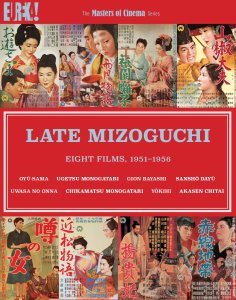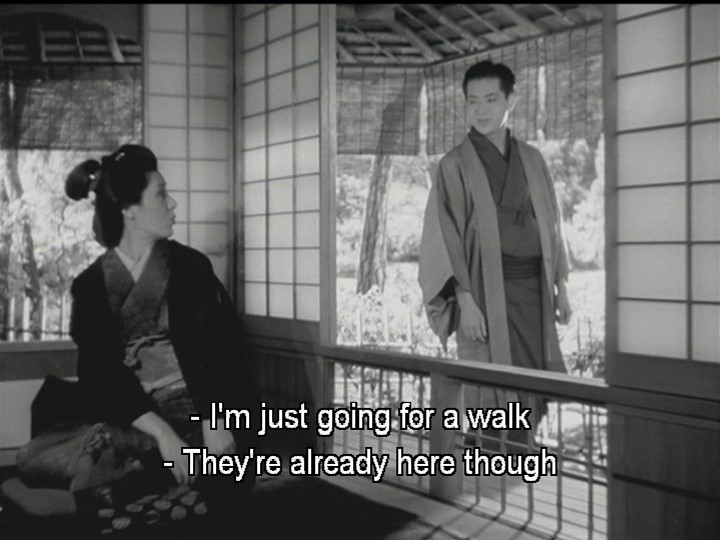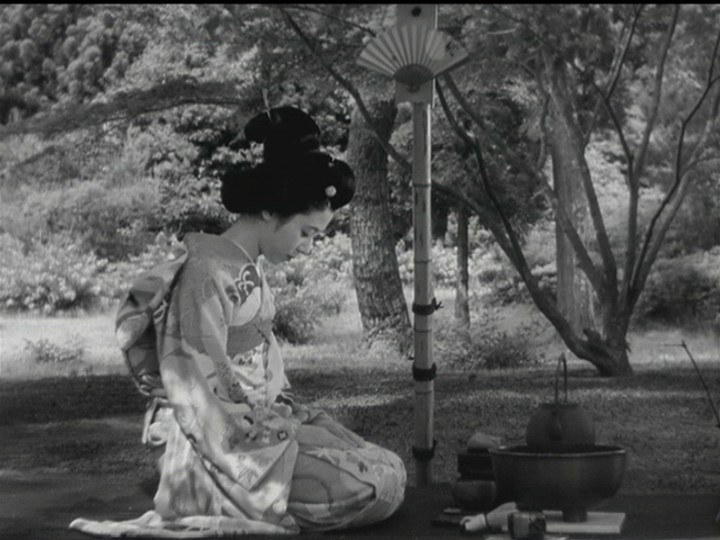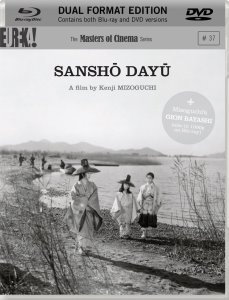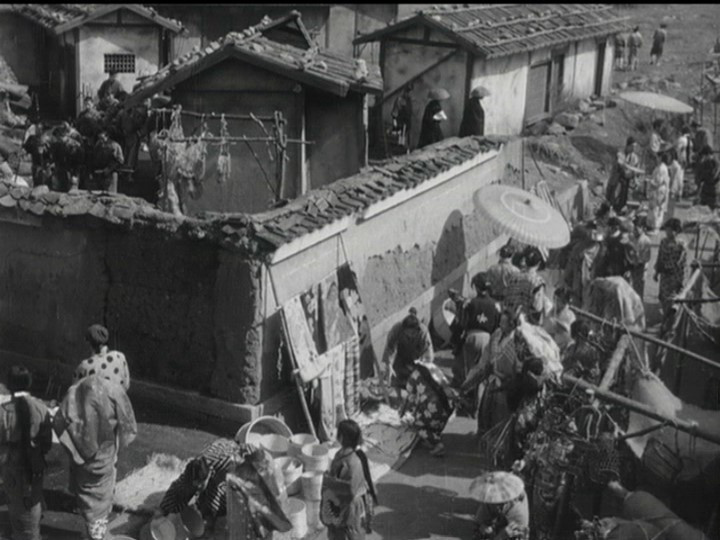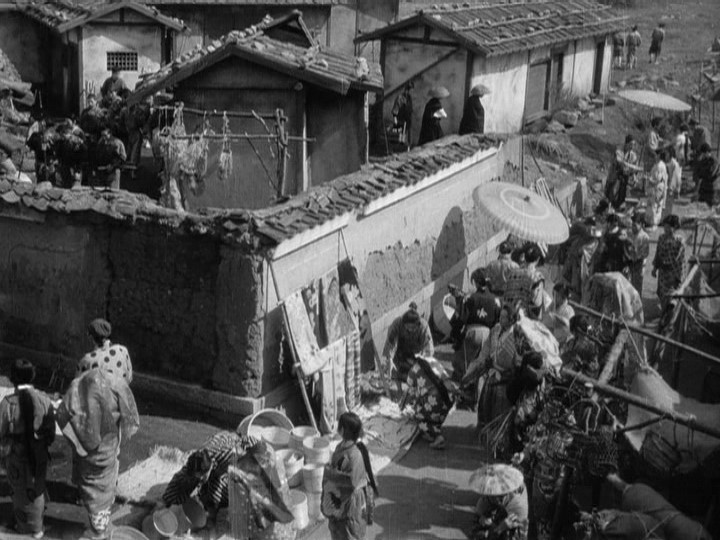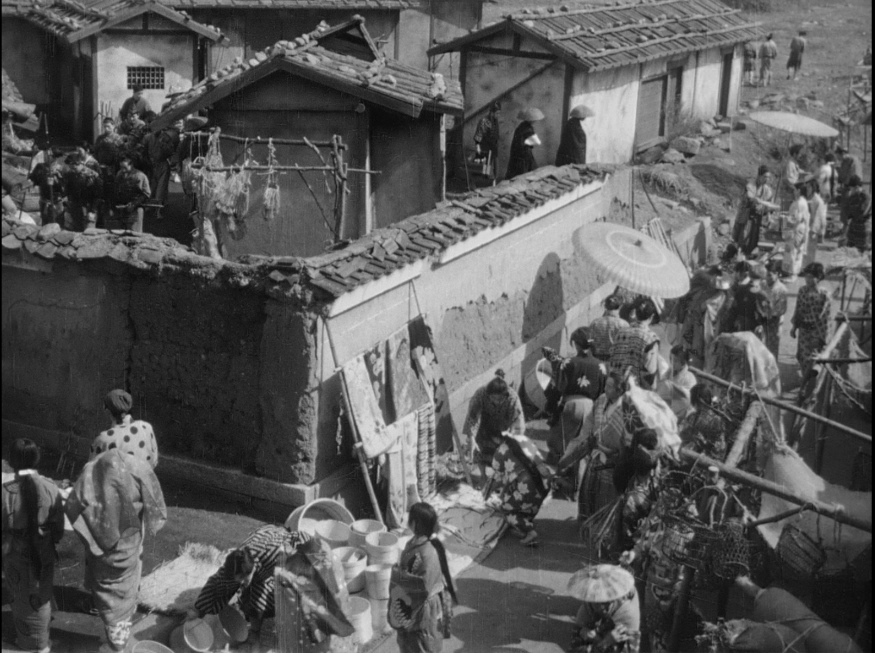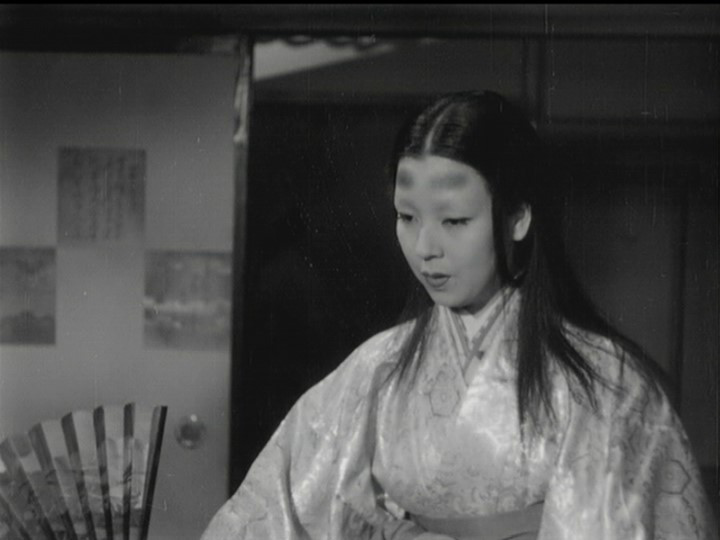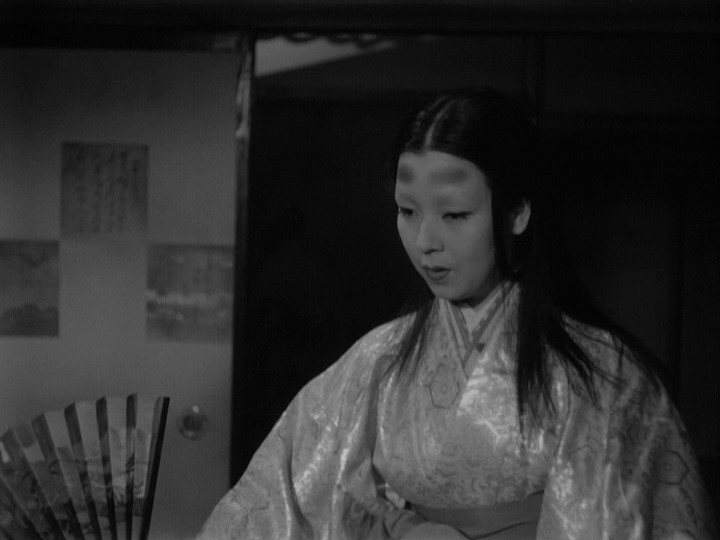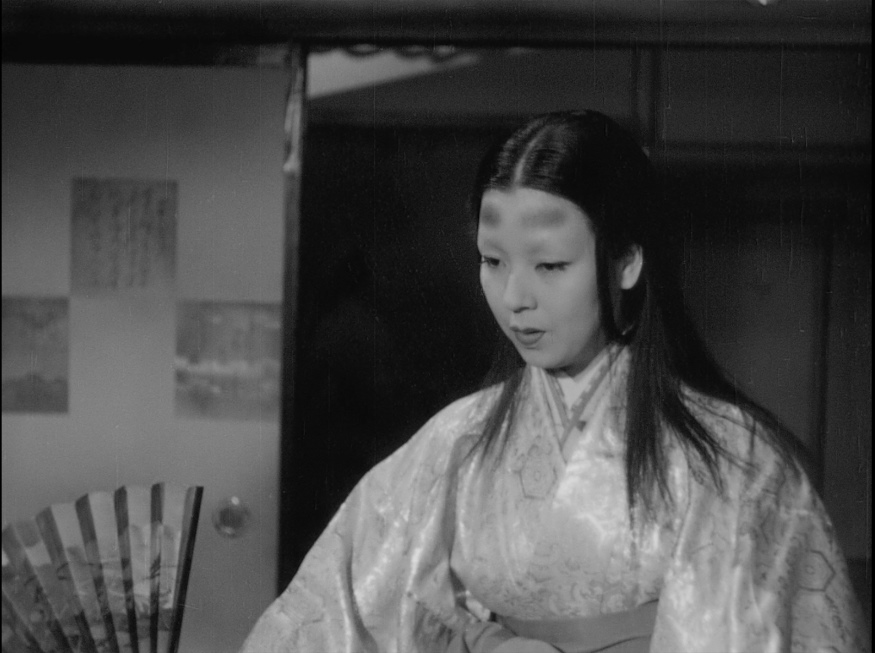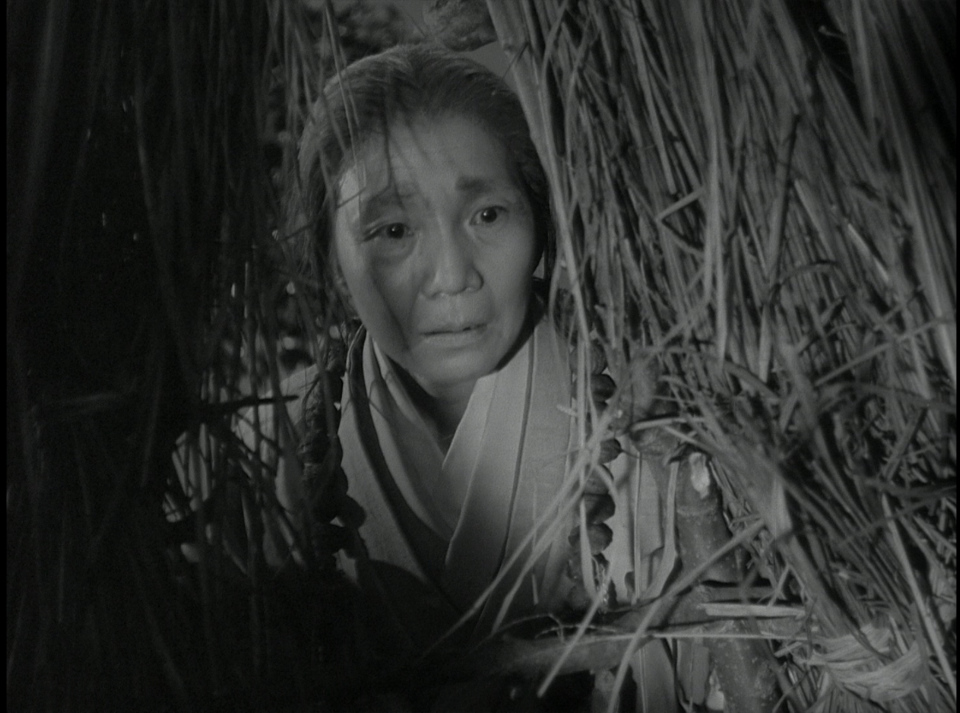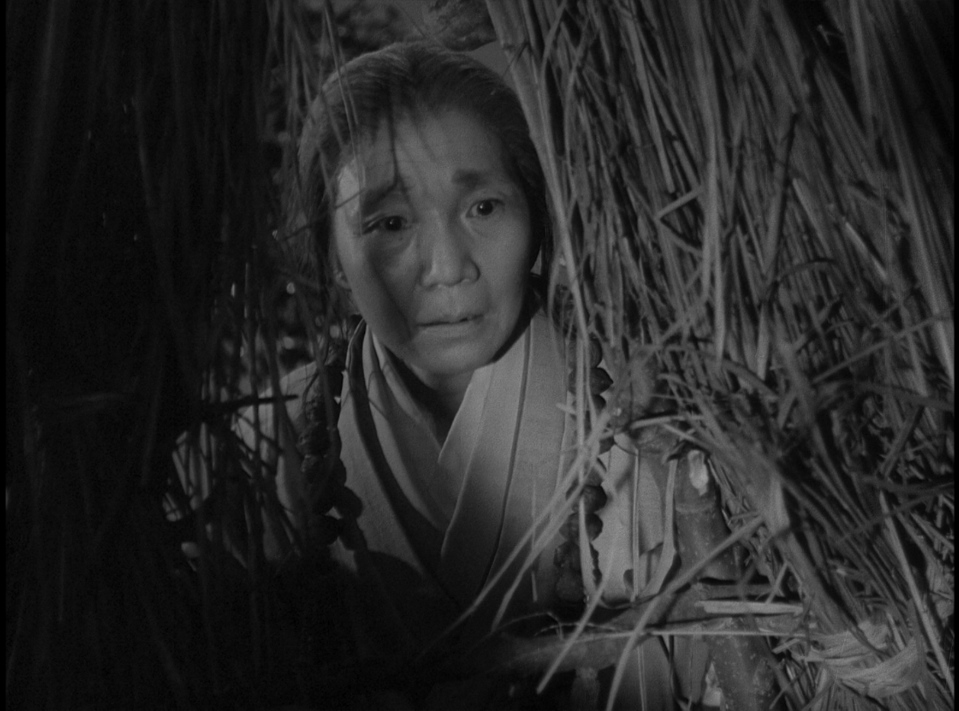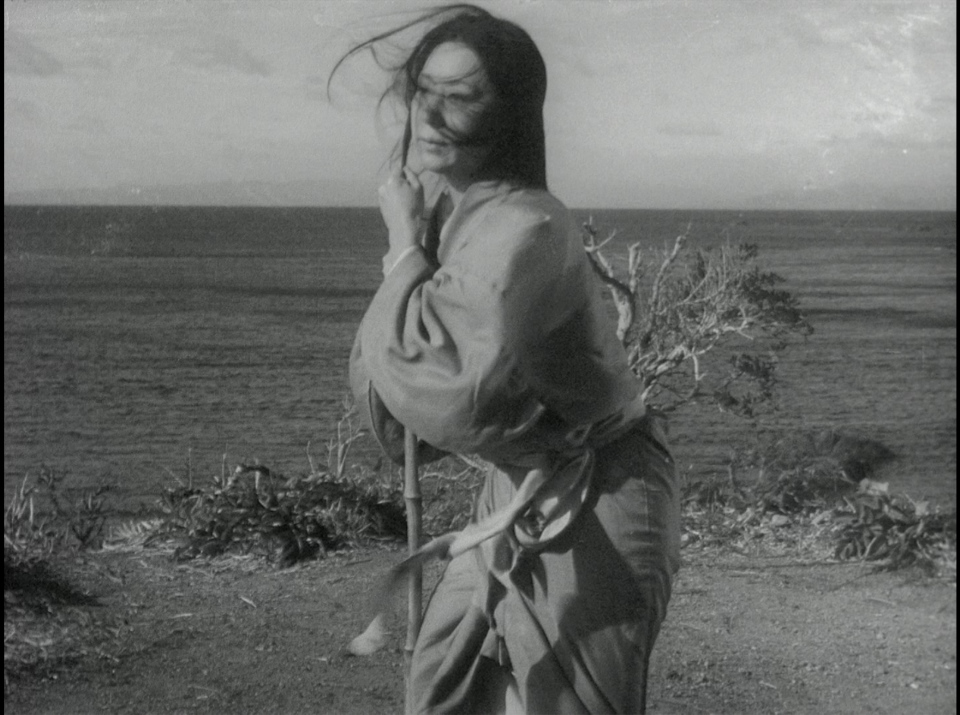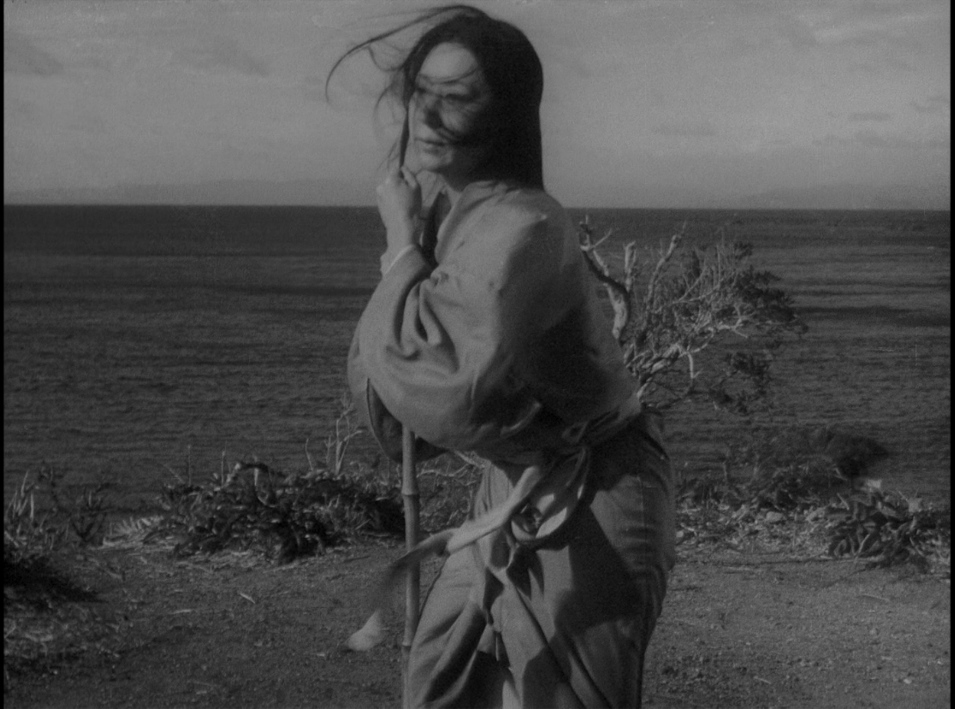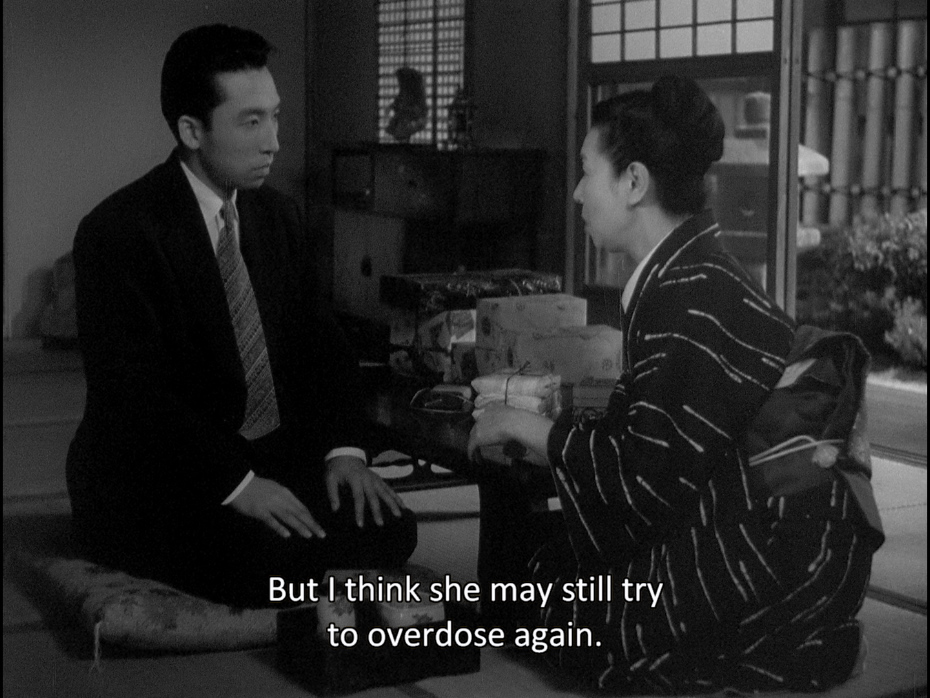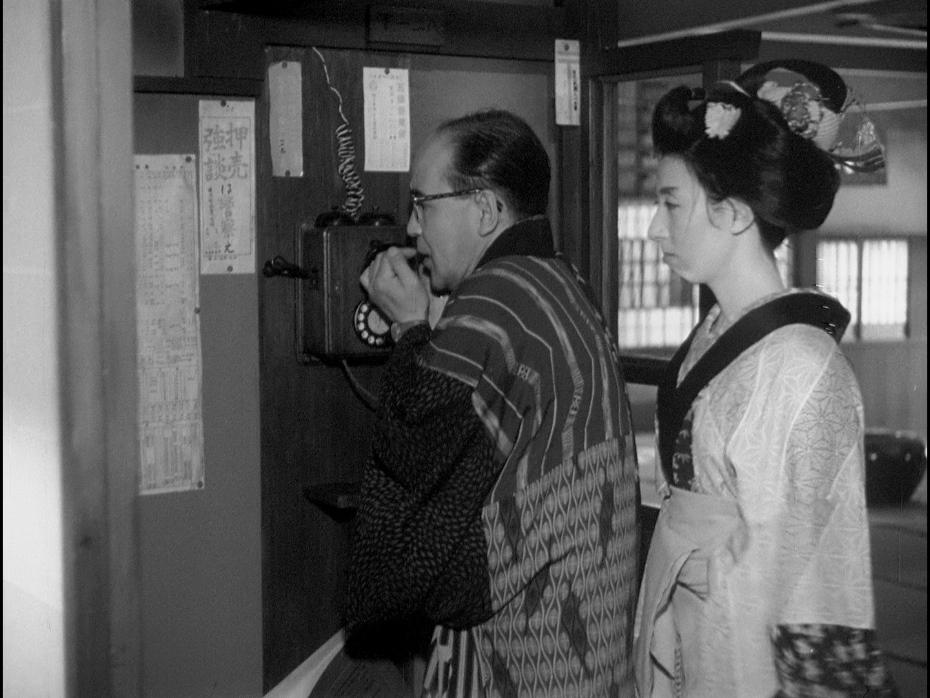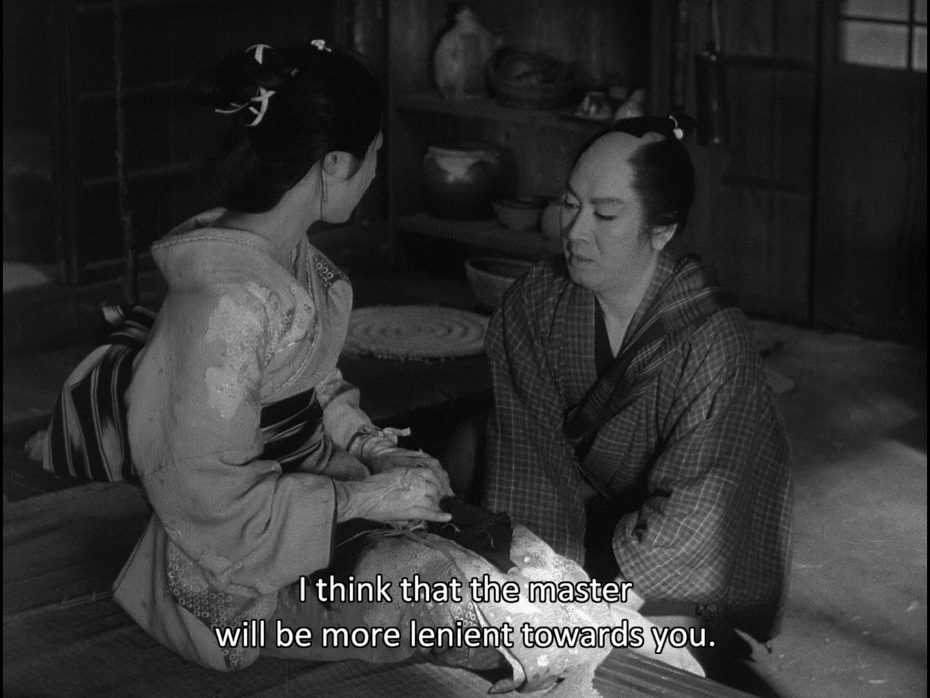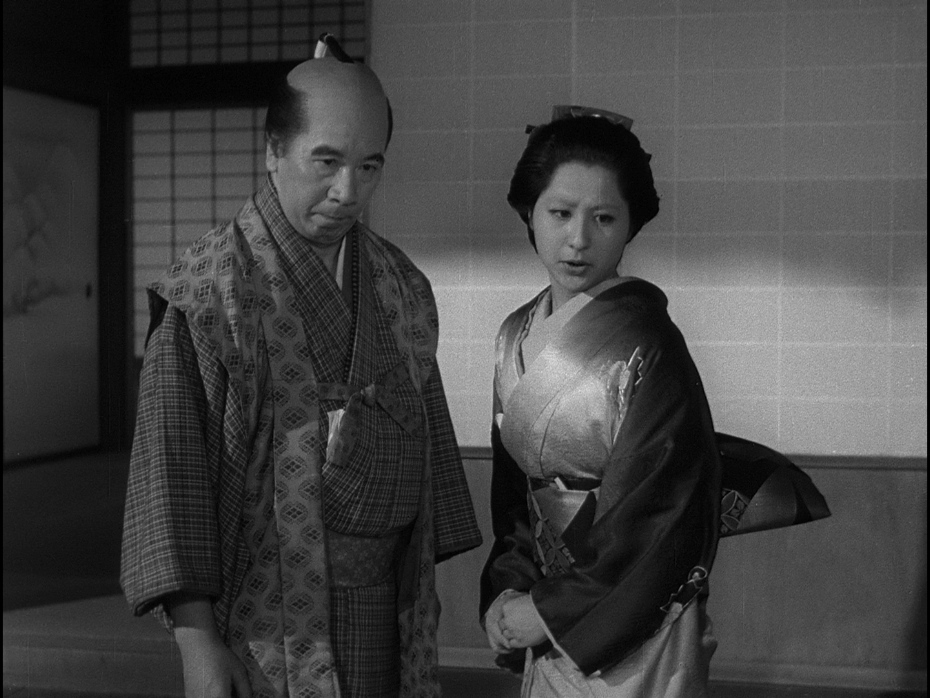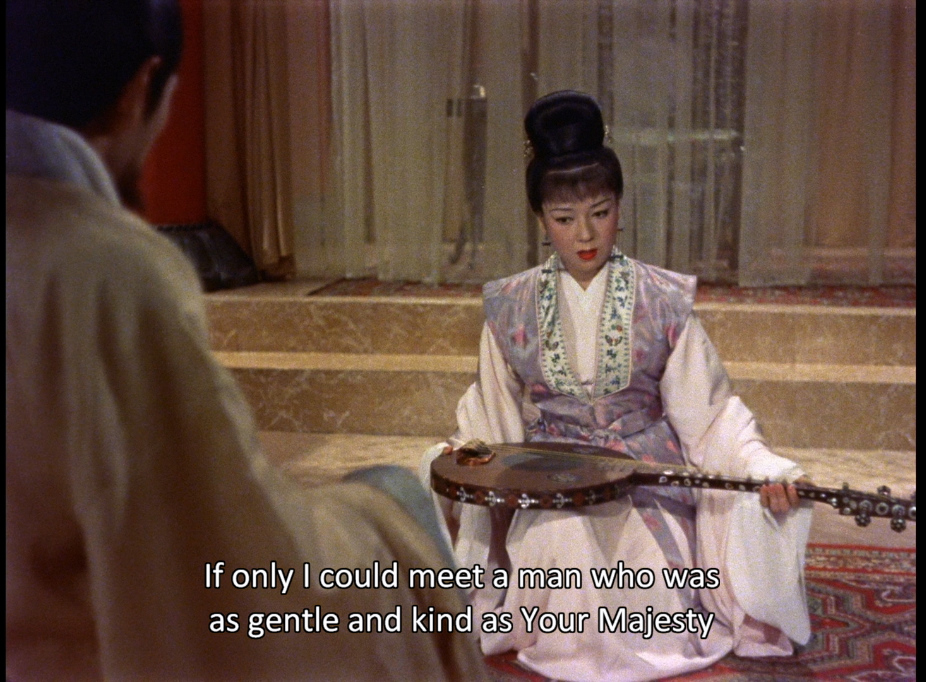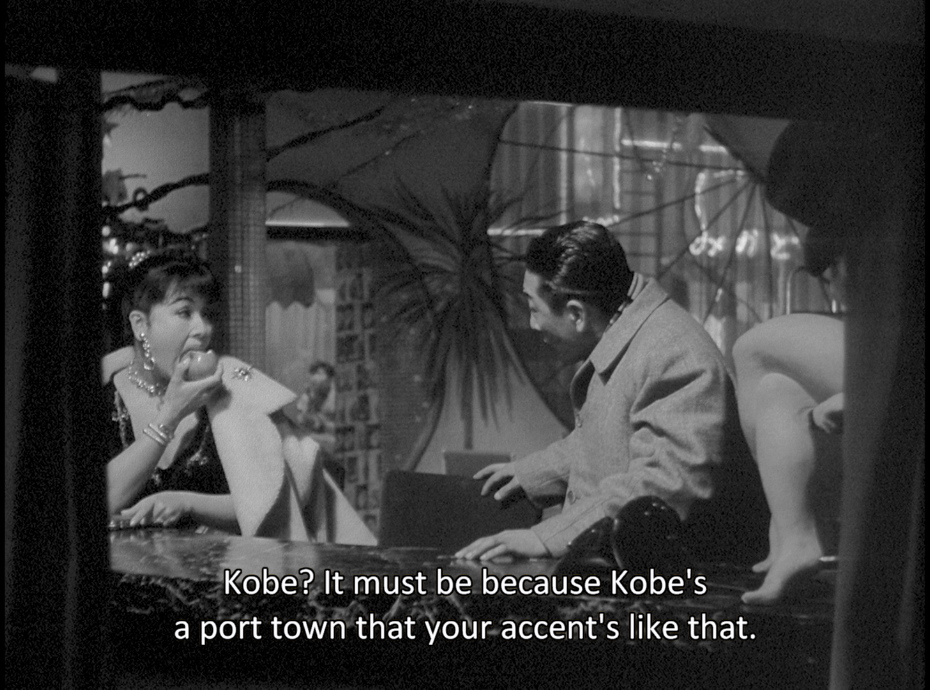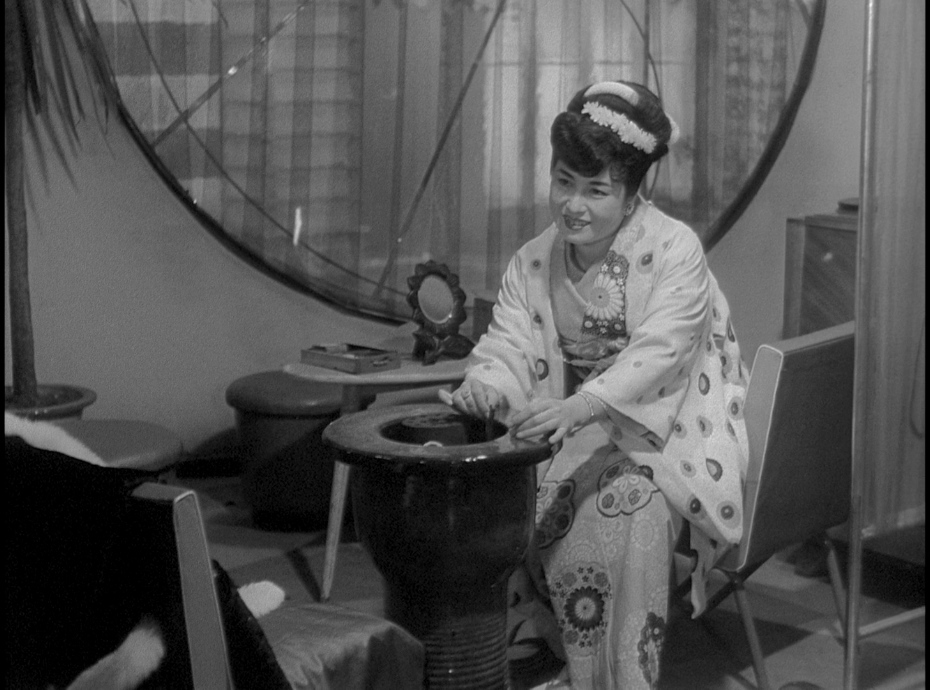|
WE NEED YOUR HELP! We have started a Patreon page with the hopes that
some of our followers would be
willing to donate to keep DVDBeaver
alive. We are a small niche, so your
generosity is vital to our
existence. |
![]()
![]()

![]()
![]()
|
Search DVDBeaver |
S E A R C H D V D B e a v e r |
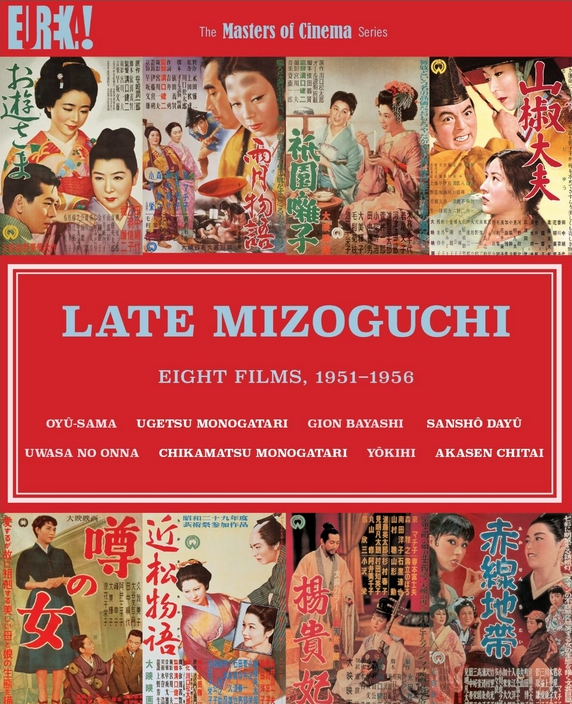 |
Late Mizoguchi [Blu-ray]
Oyu-sama (1951) Ugetsu monogatari (1953)
Gion
bayashi (1953)
Sansho dayu (1954), aka Sansho the Bailiff
Uwasa no onna (1954)
Chikamatsu monogatari (1954), aka The Crucified Lovers
Yokihi (1955), aka The Princess Yang Kwei-fei
Akasen chitai (1956), aka Street of Shame
| SYNOPSIS
Kenji Mizoguchi looms over the history
not only of Japanese cinema - but of world cinema altogether. These
eight films from the last decade of Mizoguchi's career represent a
collection of eight of his greatest works, which is to say, eight of
the greatest films ever made. The Films contained in this Blu-Ray Boxed Set: Oyu-sama (1951) is an adapatation of Tanizaki Jun'ichiro: a poignant tale of two sisters and their ill-fated relationship with the same man: a tale of the social mores and affairs of the heart that might destroy siblings. Ugetsu monogatari (1953), a ghost-tale par excellence and one of the most highly acclaimed works of the cinema, is an intensely poetic, sublimely lyrical tragedy of men lured away from their wives which consistently features on polls of the best films ever made. Gion bayashi (1953) is a drama set in the world of the geisha, a subtle masterwork that yields a myriad of insights into the lives of Japan's "service-class" in the early '50s. Sansho dayu (1954), aka Sansho the Bailiff, recounts an unforgettably sad story of the 11th century involving kidnapping and indentured servitude - and figures, again, with its exquisite tone and purity of emotion as one of the most critically revered films of any era. Uwasa no onna (1954), another Mizoguchi picture set in a modern geisha house, pits mother against daughter, with the ensuing drama forcing both to confront their attitudes toward family and business in what is one of the filmmaker's most astute filmic examinations of oppressed femininity. Chikamatsu monogatari (1954), aka The Crucified Lovers, is the tragic story of a forbidden love affair between a merchant's wife and her husband's employee, was hailed by the legendary Akira Kurosawa as "a great masterpiece that could only have been made by Mizoguchi. " Yokihi (1955), aka The Princess Yang Kwei-fei, recounts an 8th-century Chinese story of a widowed emperor and his imperial concubine, filmed in sumptuous, hallucinatory Agfa-stock colour. Akasen chitai (1956), aka Street of Shame, is Kenji Mizoguchi's final masterpiece and one of the greatest last films ever made, depicting the goings-on in a Tokyo brothel carrying the name "Dreamland, " where dreams are nevertheless shattered beneath the weight of financial necessity and all questions of conscience - a last testament which inspired the great French critic Jean Douchet to proclaim: "For me, along with Chaplin's Monsieur Verdoux and Renoir's La Rčgle du jeu, the greatest film in the history of the cinema. " |
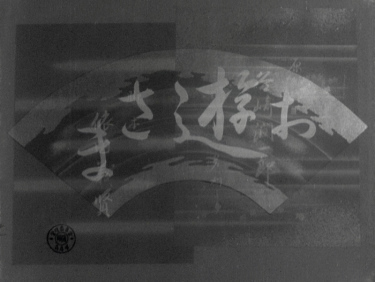 |
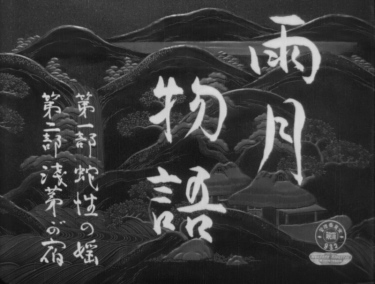 |
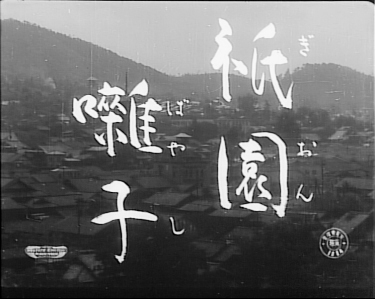 |
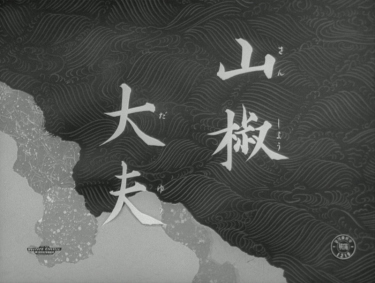 |
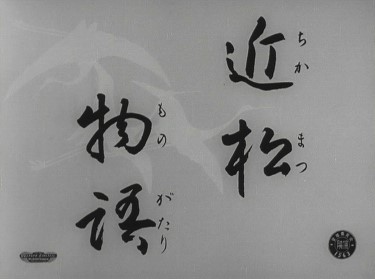 |
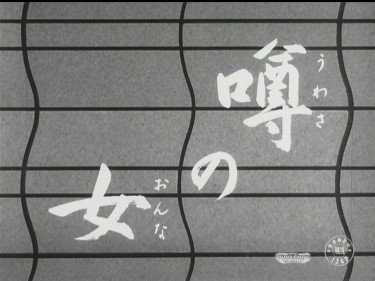 |
|
|
|
|
Box Cover |
|
CLICK to order from:
|
|
Distribution |
Masters of Cinema - Region 'B' - Blu-ray |
|
|
Subtitles |
English, None |
|
|
Features |
Release Information: (see individual - below - for precise supplement listings)
• Tony Rayns video
discussions on each of the eight films
Blu-ray Release Date:
October 28th, 2013 |
|
| Comments: |
NOTE: These Blu-ray captures were taken directly from the Blu-ray disc. Firstly, Chikamatsu Monogatari and Uwasa no Onna, along with the Blu-ray containing Akasen Chitai and Yōkihi are only available, at present, in 1080P via this Masters of Cinema 'Late Mizoguchi' 4 disc package which includes the previously released, Oyu-sama (1951), Ugetsu monogatari, (1953), Gion bayashi (1953), and Sansho dayu (1954) on Blu-ray. Please click the above listed titles to see our comparisons of all 8 films in digital. Firstly, kudos to Masters of Cinema for going to the trouble of obtaining the better, Asian, Masters and waiting to release this Blu-ray package in it's completeness. Video: We've already compared each individual release - posting matching screen captures, commenting on a/v and extras here: Chikamatsu Monogatari and Uwasa no Onna, Akasen Chitai and Yōkihi, Oyu-sama (1951), Ugetsu monogatari, (1953), Gion bayashi (1953), and Sansho dayu (1954) Please visit those comparisons for a more detailed review of those particular 1080P renderings. Essentially even though they may share dual-layered discs - they have supportive bitrates and excellent image quality. Audio offers lossless transfers (DTS-HD Master or LPCM) for each of the 8 titles. All have optional English subtitles and the Blu-ray discs are all region 'B'-locked. Despite acceptable imperfections I trust these sound as good as they will for digital consumption. We have reviewed the extras on the Blu-rays in each individual comparisons. Each offer input from Tony Rayns plus an audio commentary on Akasen Chitai. There are also trailers, but notably a compilation of 200 illustrated pages of liner note booklet material.
Region 'B'ers have been so fortunate to have these 8 Mizoguchi films available on Blu-ray - not to mention 5 important earlier films (including Zangiku monogatari (1939) aka The Story of the Last Chrysanthemum) from The Mizoguchi Blu-ray Collection - offered by Artificial Eye! The Masters of Cinema label has always been associated with professionalism and thoroughness - they don't cut corners and this package borders on the unreal for fans who had trouble, less than decade ago, even obtaining these on hackneyed VHS copies. These are in 1080P! I am so proud of the past work of Nick Wrigley and those maintaining his high standards which have truly created something special in this label. Who should own this? how about every film fan in the world. As your film knowledge grows - so will your appreciation of the greatness of these cinematic works. We give this our highest recommendation. My suggestion is to re-purchase for the 4 new transfers - even if you own the first 4 - as a gesture of support for this incredible group of individuals who have brought you this immense and invaluable Blu-ray package. |
Sample Blu-ray Menus / Extras
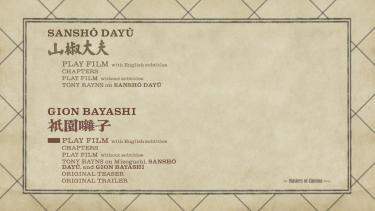 |
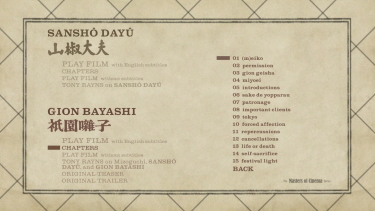 |
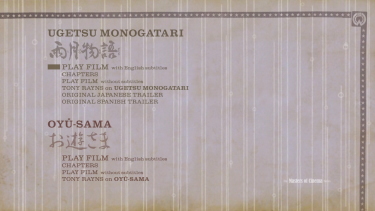 |
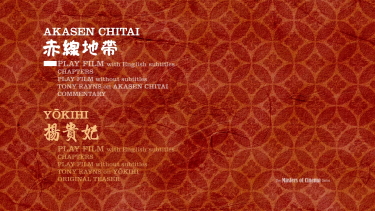 |
 |
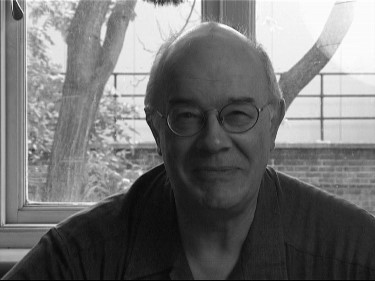 |
CLICK EACH BLU-RAY CAPTURE TO SEE ALL IMAGES IN FULL 1920X1080 RESOLUTION
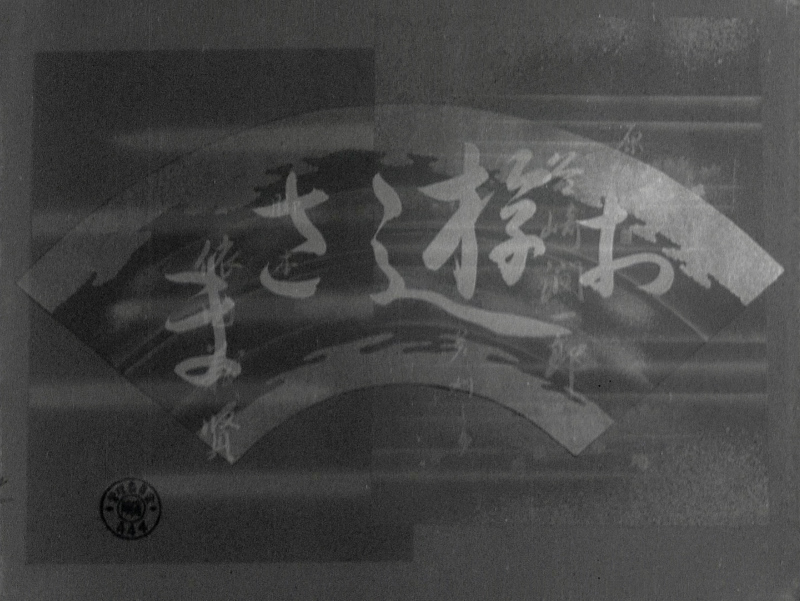
(aka 'Oyū-sama' or 'Lady Ōyu' or 'Miss Oyu')
directed by Kenji
Mizoguchi
|
Another literary adaptation –
this time of a story by one of Japan’s modern literary masters, novelist
Tanizaki Jun’ichiro – Mizoguchi’s Oyu-sama [Miss Oyu] is a poignant and
contemplative tale of two sisters and their ill-fated relationship with the
same man. At the core is Mizoguchi-regular Tanaka Kinuyo (who also stars in
Ugetsu Monogatari) as the eponymous Oyu, the older sister who allows marital
customs to dictate the lives of those caught up in this complex love
triangle. |
Poster
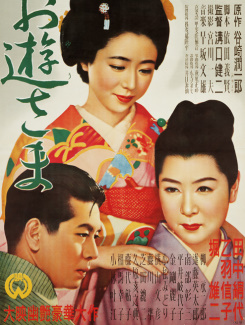 |
|
1) Masters of Cinema - Region 2- NTSC TOP 2) Masters of Cinema - Region 'B' Blu-ray BOTTOM |
|
|
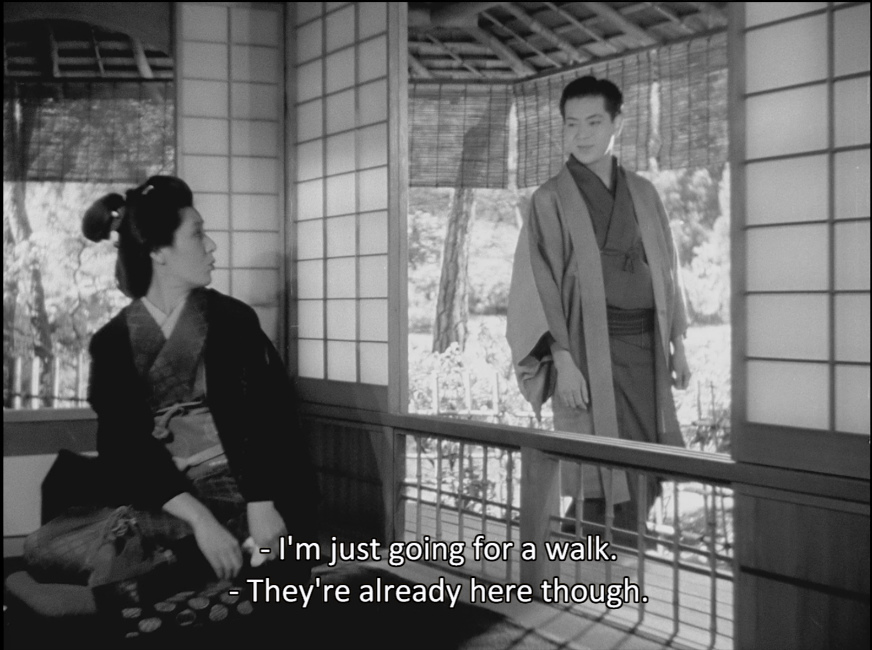 |
|
1) Masters of Cinema - Region 2- NTSC TOP 2) Masters of Cinema - Region 'B' Blu-ray BOTTOM |
|
|
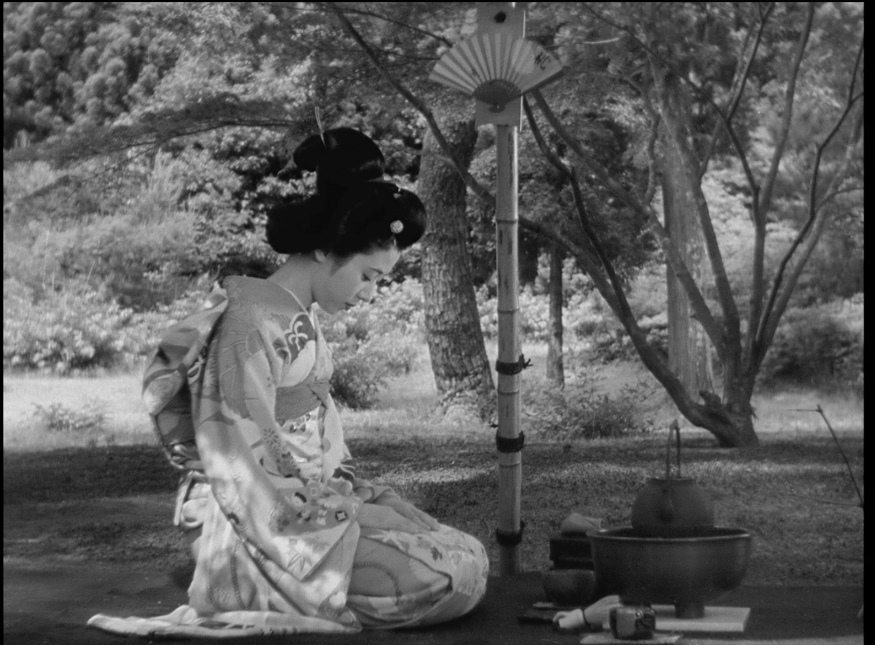 |
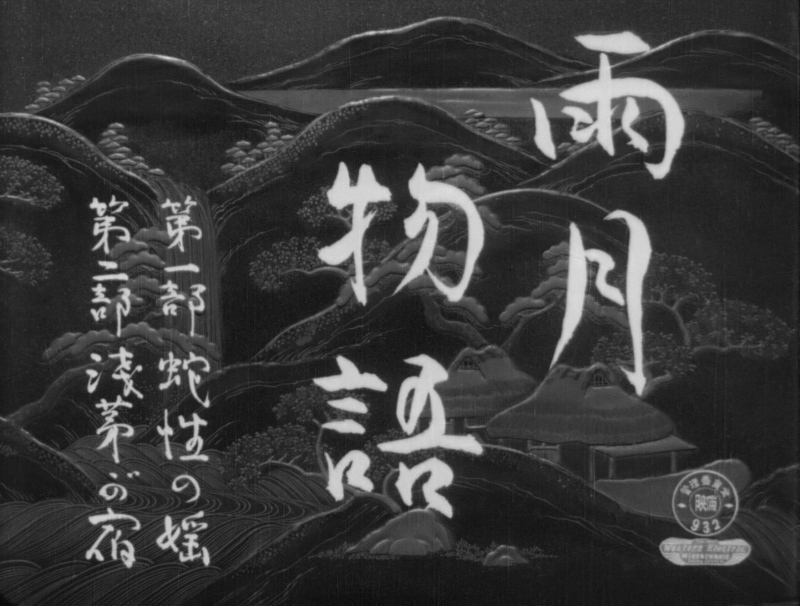
(aka 'Ugetsu monogatari' or 'Tales of Ugetsu' or 'Tales of a Pale and Mysterious Moon After the Rain')
directed by Kenji
Mizoguchi
|
The great Japanese director Kenji Mizoguchi draws on sources from both East and West for this, his crowning achievement. Focusing on an ambitious potter haunted by a beautiful ghost and a farmer who dreams of becoming a samurai, Ugetsu offers a commentary on the delusions of lust and power and the folly of war. Renowned cinematographer Kazuo Miyagawa helps Mizoguchi seamlessly interweave the supernatural with reality, creating one of the most beautiful films of all time.
***
"Known to American audiences simply as Ugetsu, this was the film which introduced Mizoguchi to the West. During the civil wars of the 16th century, a potter desperately trying to continue his craft in a war-torn village meets a phantom princess and is lured away to a land of sensual delights. Meanwhile his neighbor, dreaming of military glory, achieves a general's rank for his fraudulent exploits. Eventually, both men are brought down to earth, and they return home to spend the rest of their lives in the fields. But for the women of the tale the lesson has been even more bitter: the potter's wife is murdered by bandits, the samurai's is reduced to prostitution; even the ghost princess, Lady Wakasa, is destroyed by male betrayal. Phantoms and ghosts are evoked in imagic scenes, and fantasy and reality are inseparable, making Mizoguchi's stylistically superb film a powerful study in psychology and an intense tragedy. Ugetsu is evocative of the Buddhist universe of Noh drama, where time is a movement of consciousness, memory is as tangible as the present, and the dead return to voice their grief or longing. Blending a tale of karmic law, a ghost story, and a love story, Mizoguchi also refers to other Japanese art forms such as narrative picture scrolls in his use of perspective and his signature long takes that move us seamlessly from one scene to the next. For, just as his images overflow with life-characters forever running off toward more life outside the frame—so this reality flows into the phantom universe as well. He builds the otherworld entirely out of what he is given in this one: shadows and lighting, decor and texture, and the graceful chicanery of desire."
|
Posters
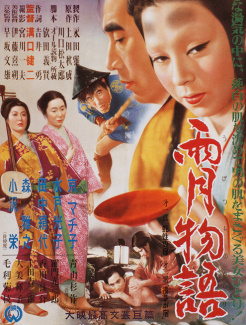 |
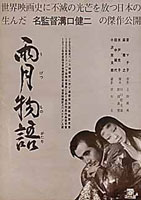 |
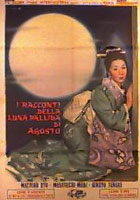 |
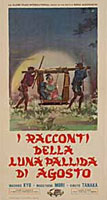 |
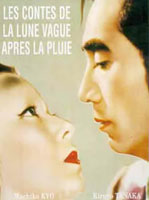 |
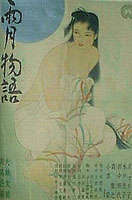 |
Theatrical Release: March 26th, 1953 - Tokyo
|
Individual Purchase link: |
| Eureka (Masters of Cinema) Spine # 37 - Region 'B' - Blu-ray |
| 2:04:04.687 (1:24:33.109 for Gion Bayashi) |
|
1.33:1 - 1080P Dual-layered Blu-rayDisc Size: 48,845,250,102 bytesFeature: 27,121,360,896 bytes Video Bitrate: 26.99 MbpsCodec: MPEG-4 AVC Video Gion Bayashi: 1.33:1 - 1080P Feature: 19,159,308,288 bytes Video Bitrate: 27.99 MbpsCodec: MPEG-4 AVC Video |
| DTS-HD Master Audio Japanese 724 kbps 2.0 / 48 kHz / 724 kbps / 16-bit (DTS Core: 2.0 / 48 kHz / 512 kbps / 16-bit) |
| English, None |
|
Release Information: Disc Size: 48,845,250,102 bytesFeature: 27,121,360,896 bytes Video Bitrate: 26.99 MbpsCodec: MPEG-4 AVC Video Gion Bayashi: 1.33:1 - 1080P Feature: 19,159,308,288 bytes Video Bitrate: 27.99 MbpsCodec: MPEG-4 AVC Video
Edition Details: • Gion Bayashi in 1080P • Video discussion about Sansho Dayu by acclaimed Japanese film expert/critic, festival programmer, and filmmaker Tony Rayns.
• Original trailer and original teaser trailer for Gion
DVD of the Feature. |
|
1) Bo Ying - Region 0 - PAL TOP 2) Masters of Cinema - Region 2- NTSC SECOND 3) Criterion - Region 1 - NTSC - THIRD 4) Masters of Cinema - Region 'B' Blu-ray BOTTOM |
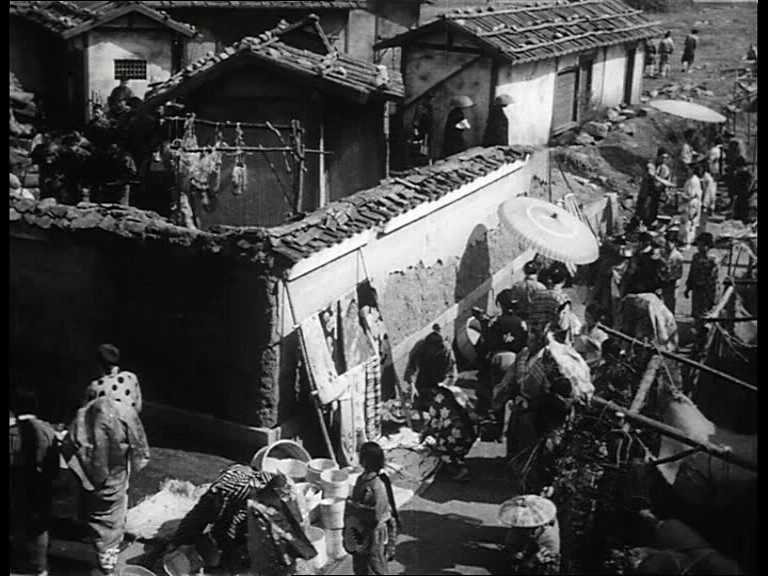 |
|
|
|
|
|
1) Bo Ying - Region 0 - PAL TOP 2) Masters of Cinema - Region 2- NTSC SECOND 3) Criterion - Region 1 - NTSC - THIRD 4) Masters of Cinema - Region 'B' Blu-ray BOTTOM |
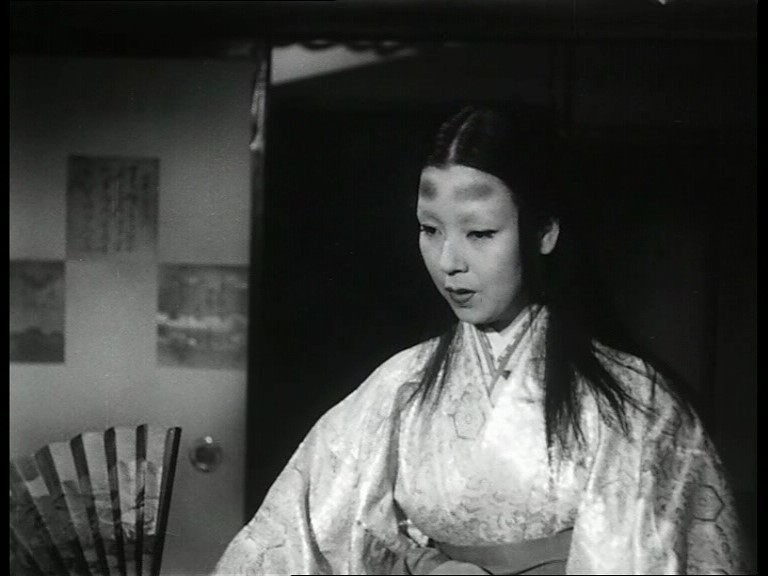 |
|
|
|
|
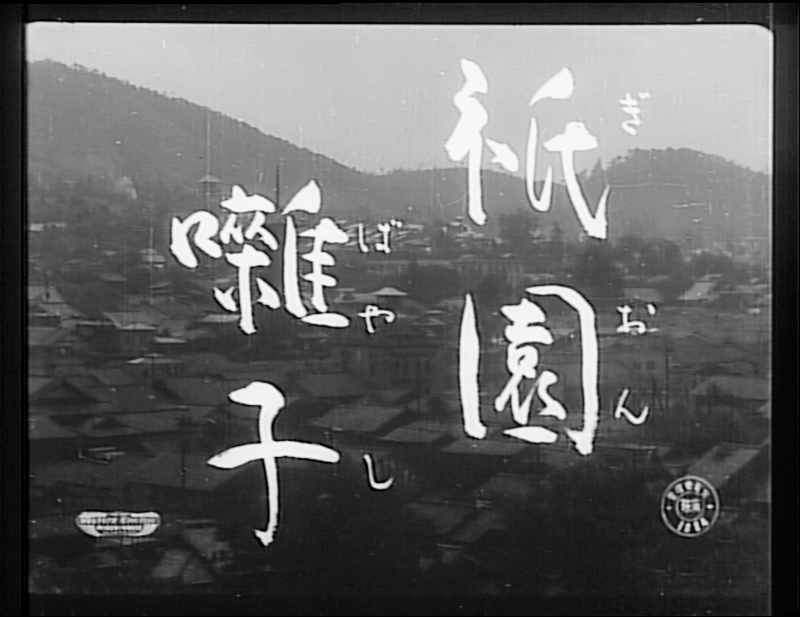 |
|
One of Mizoguchi's most affecting films, this concerns a geisha who takes a teenage novice under her wing and gives her gentle encouragement in rebelling against her fate at the hands of politicking, insensitive businessmen patrons. A hymn to women's mutual supportiveness, acutely aware that selling one's body is very different from selling one's emotions, and that sometimes it's just too late to change things for oneself. As elegantly made as ever, of course, and poignant in the extreme Excerpt from TimeOut Film Guide located HERE
A late (1953) masterpiece by the preeminent Japanese director, Kenji Mizoguchi (its Japanese title translates as Gion Festival Music). Mizoguchi treats his perennial theme--woman and her problematical place in a society that both exploits and idealizes her--through a story of a young girl's education as a geisha and her conflicts with an older sister. One of the few Mizoguchi films of the 50s with a contemporary setting, it is no less eternal in its mise-en-scene than Ugetsu or Sansho the Bailiff. |
|
1) Eureka (Masters of Cinema) - Region 2 - NTSC TOP 2) Masters of Cinema - Region 'B' Blu-ray BOTTOM |
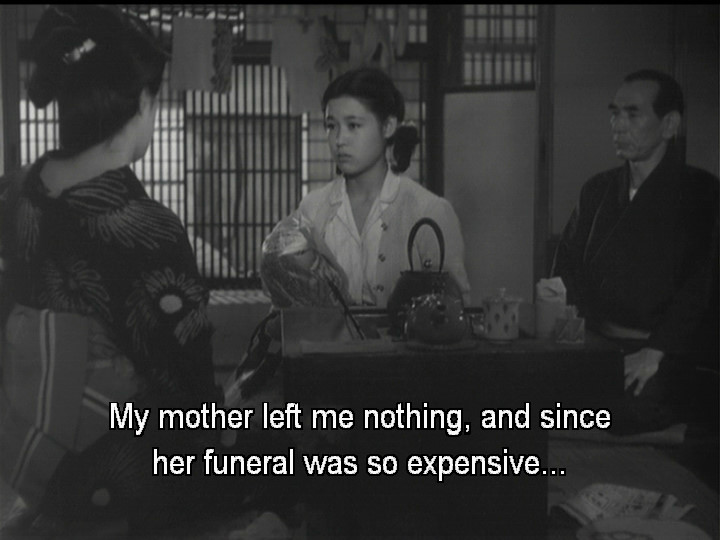 |
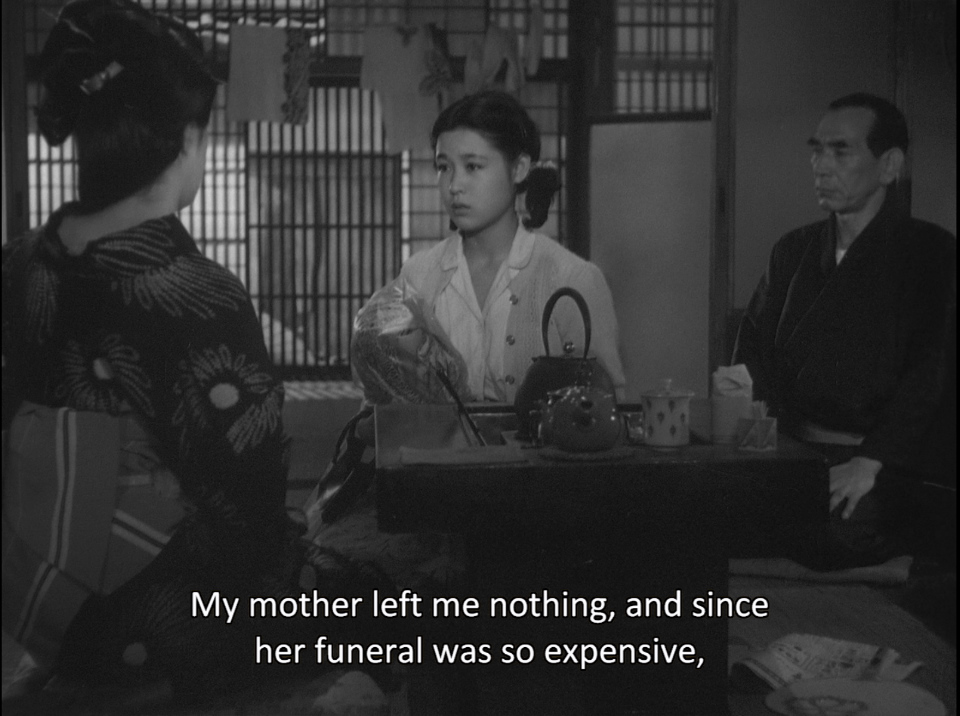 |
|
1) Eureka (Masters of Cinema) - Region 2 - NTSC TOP 2) Masters of Cinema - Region 'B' Blu-ray BOTTOM
|
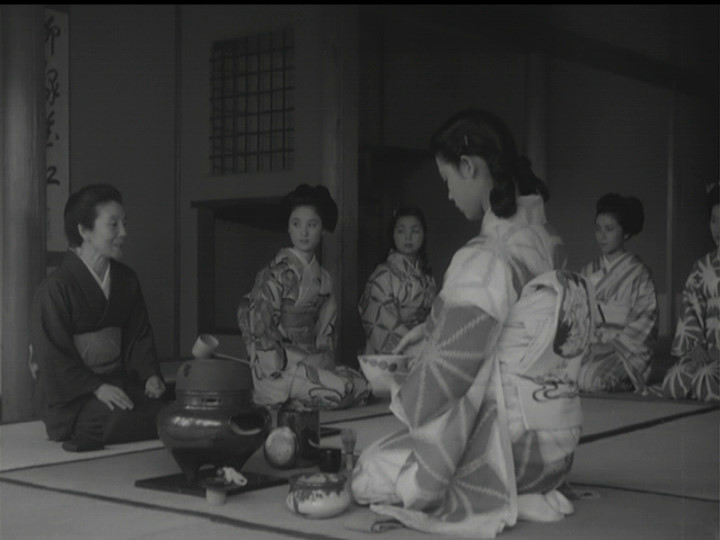 |
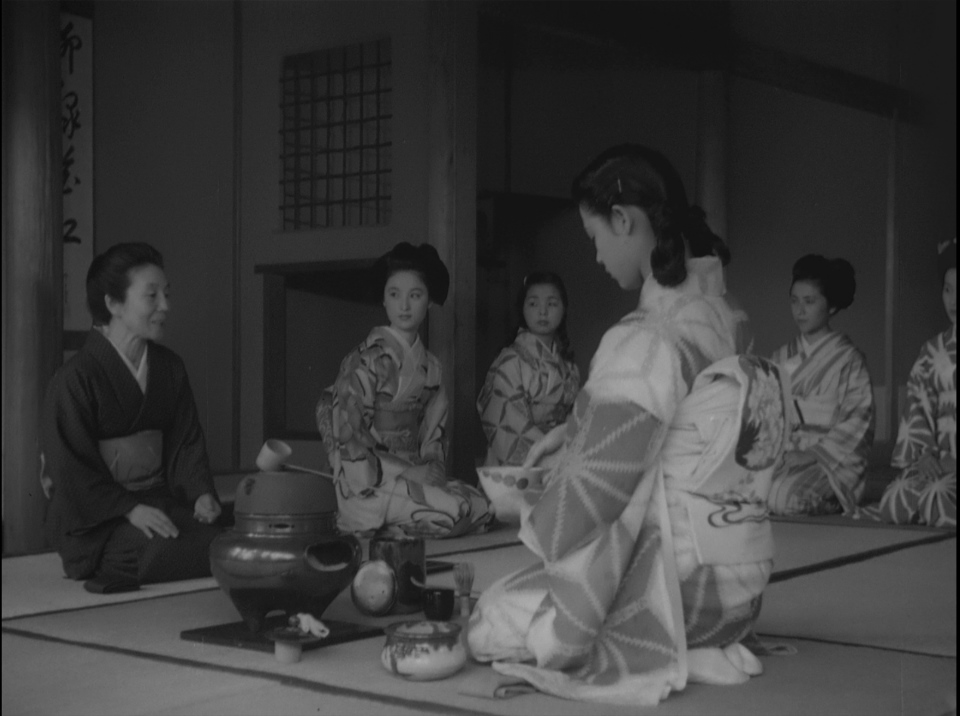 |
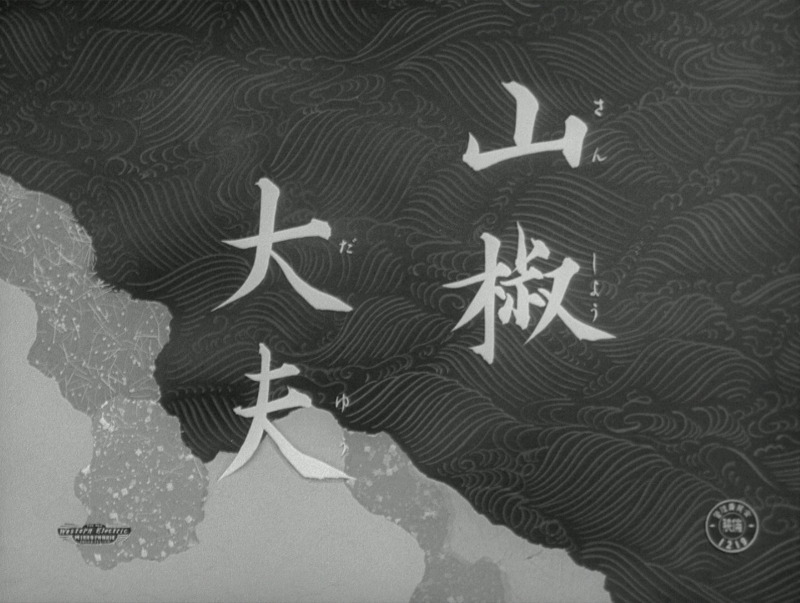
(aka 'Sanshō dayū' olr 'Legend of Bailiff Sansho' or 'Sansho the Bailiff' or 'The Bailiff')
Directed by
Kenji Mizoguchi
|
Based on an ancient legend, as
recounted by celebrated author Mori Ogai (in his short story of the same name,
written in 1915), and adapted by Japanese director Mizoguchi Kenji, Sansho
Dayu is both distinctively Japanese and as deeply affecting as a Greek
tragedy. Described in its opening title as “one of the oldest and most tragic in
Japan’s history”, Mizoguchi depicts an unforgettably sad story of social
injustice, family love, personal sacrifice, and fateful tragedy. **** When an idealistic governor disobeys the reigning feudal lord, he is cast into exile, his wife and children left to fend for themselves and eventually wrenched apart by vicious slave traders. Under Kenji Mizoguchi’s dazzling direction, this classic Japanese story became one of cinema’s greatest masterpieces, a monumental, empathetic expression of human resilience in the face of evil. **** A humane provincial governor in 11th century Japan is forced into exile by his political opponents, and the members of his family (wife, son and daughter) fall victim to all the cruelties of the period while on their way to join him. Mizoguchi views this deliberately simple story (in Japan it is known as a folk-tale) from two perspectives at once: from the inside, as an overwhelmingly moving account of a man (the son) facing up to his own capacity for barbarism; and from the outside, as an infinitely tender meditation on history and individual fate. The twin perspectives yield a film that is both impassioned and elegiac, dynamic in its sense of the social struggle and the moral options, and yet also achingly remote in its fragile beauty. The result is even more remarkable than it sounds. |
Posters (Sansho left - Gion right)
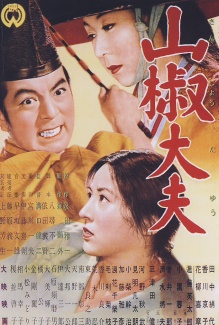 |
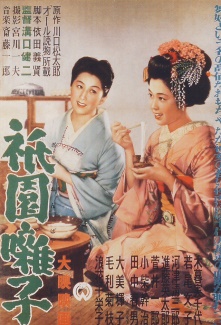 |
Theatrical Release: March 31st, 1954
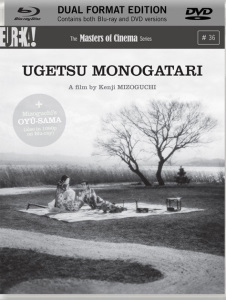 Individual Purchase link: |
| Eureka (Masters of Cinema) Spine # 36 - Region 'B' - Blu-ray |
| 1:36:43.756 |
|
1.33:1 - 1080P Dual-layered Blu-rayDisc Size: 45,010,819,005 bytesFeature: 21,996,122,112 bytes Video Bitrate: 27.99 MbpsCodec: MPEG-4 AVC Video |
| DTS-HD Master Audio Japanese 830 kbps 2.0 / 48 kHz / 830 kbps / 16-bit (DTS Core: 2.0 / 48 kHz / 512 kbps / 16-bit) |
| English, None |
|
Release Information: Studio: Eureka 1.33:1 - 1080P Dual-layered Blu-ray Disc Size: 45,010,819,005 bytesFeature: 21,996,122,112 bytes Video Bitrate: 27.99 MbpsCodec: MPEG-4 AVC Video Edition Details:
• Tony Rayns on Ugetsu (8:20) • Oyu-Sama (1:33:45) • Tony Rayns on Oyu-Sama (12:45)
• 64-page booklet featuring writing by Keiko I. McDonald (author of Mizoguchi and editor of Ugetsu) and award-winning translations of Ueda Akinari’s The Reed-Choked House and A Serpent’s Lust, tales adapted by Mizoguchi in Ugetsu Monogatari.
|
|
1) Criterion - Region 1 - NTSC TOP 2) Eureka (Masters of Cinema) - Region 2 - NTSC SECOND 3) Masters of Cinema - Region 'B' Blu-ray THIRD 4) Criterion - Region 'A' Blu-ray BOTTOM |
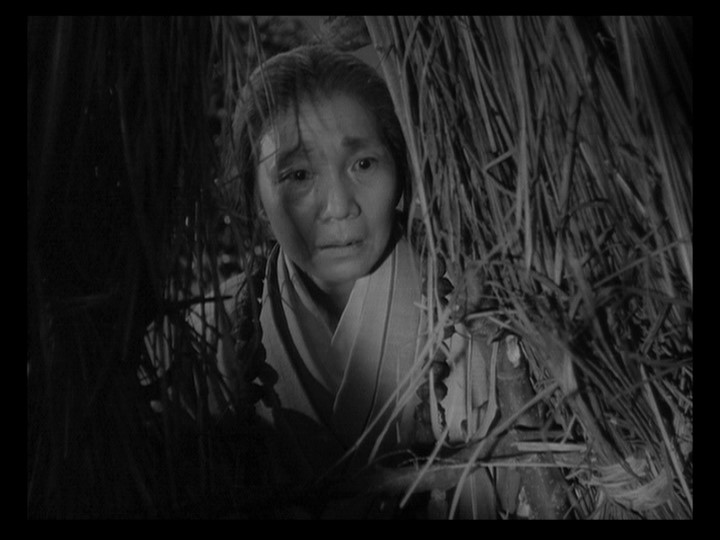 |
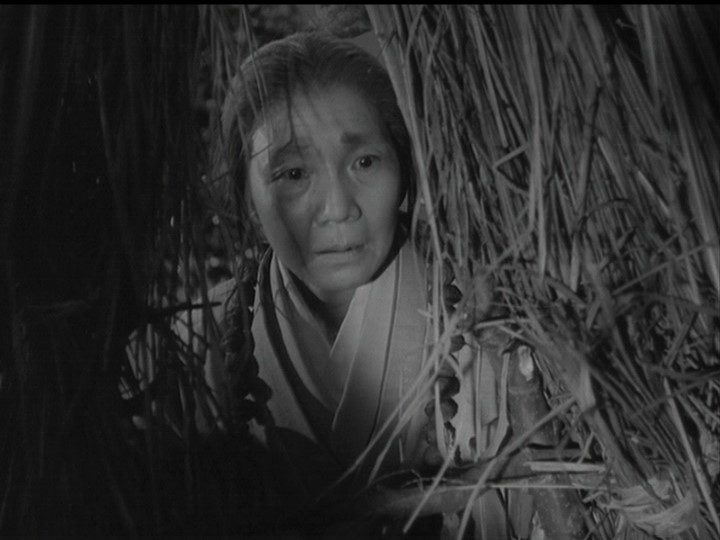 |
|
1) Criterion - Region 1 - NTSC TOP 2) Eureka (Masters of Cinema) - Region 2 - NTSC SECOND 3) Masters of Cinema - Region 'B' Blu-ray THIRD 4) Criterion - Region 'A' Blu-ray BOTTOM
NOTE: Damage? in the upper right corner of the MoC Blu-ray |
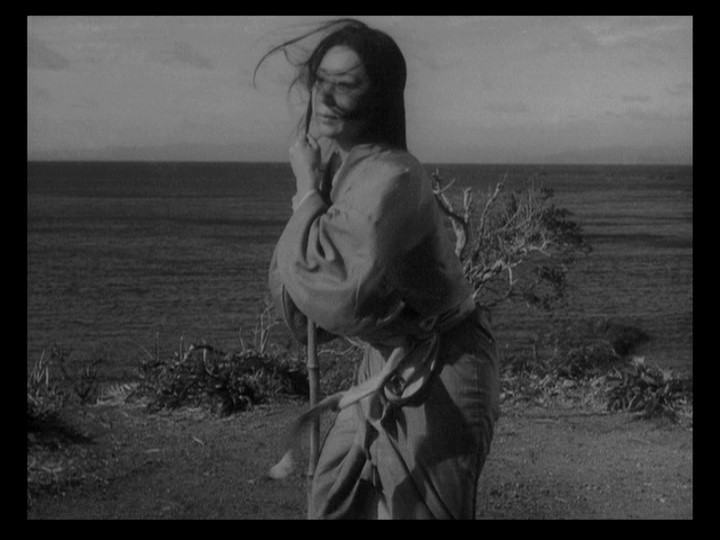 |
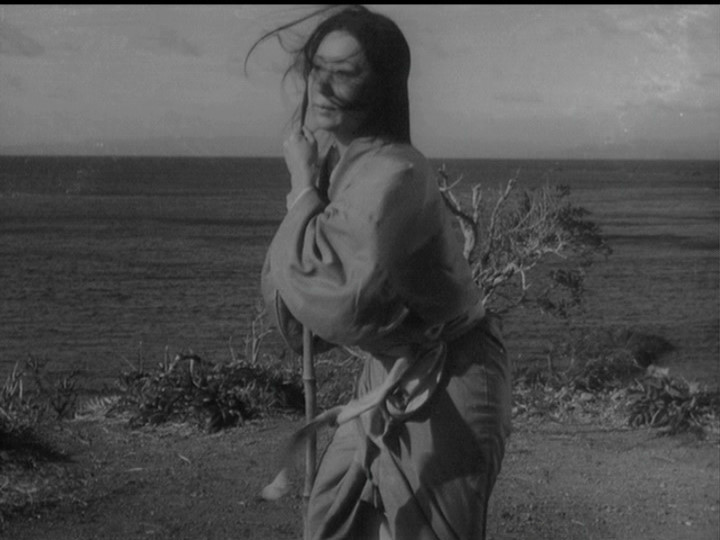 |


(aka 'Chikamatsu Monogatari / Uwasa no Onna')
Directed by
Kenji Mizoguchi
Japan 1954
|
A sublime, perfectly modulated story of doomed love between a merchant's wife and a servant, set in 17th-century Japan and drawn from the repertory of Japan's puppet theater, the Bunraku. Kenji Mizoguchi's 1954 film has the most imaginative sound track of any of his films, and while the story lacks the awesome power of his Ugetsu and Sansho the Bailiff (both made during the same period), it still remains essential viewing. Excerpt from Dave Kehr - The Chicago Reader located HERE
Based on a centuries old tale with roots in real events, Chikamatsu Monogatari [A Tale From Chikamatsu, aka The Crucified Lovers] tells the hauntingly tragic story of a forbidden love affair between a merchant's wife, Osan (Kyoko Kagawa), and her husband's employee, Mohei (Kazuo Hasegawa), in an era when the punishment for adultery was crucifixion. When a series of innocent events lead to the false accusation of an affair between Osan and Mohei, the accused pair are forced to flee an almost certain death sentence. On the run, the outlaw couple grow closer together, drawn inexorably towards the romantic crime of which they are accused. In the hands of Mizoguchi, Chikamatsu Monogatari depicts two people caught up in a constricted world where true love and social obligation are at odds. His portrayal of the lovers' dilemma lead famed director Akira Kurosawa to describe the film as "a great masterpiece that could only have been made by Mizoguchi." Released the same year, Uwasa no Onna [The Woman in the Rumour] offers a contrasting portrait of attitudes and mores concerning love and relationships. Set in a modern Kyoto geisha house, the eponymous woman in the rumour is Hatsuko (Kinuyo Tanaka, star of countless Mizoguchi films, in her last role for the director with whom she was often romantically linked), madame of her own geisha house. When Hatsuko ends up pursuing the same man as her daughter, Yukiko (Yoshiko Kuga), both women are forced to confront their attitudes towards each other and the family business. The Masters of Cinema Series is proud to present these films for the first time on home video in the UK. SPECIAL FEATURES: 2 x disc special edition containing new film restorations of both films, New and improved English subtitles, Video discussions about both Chikamatsu Monogatari and Uwasa no Onna by acclaimed Japanese film expert/critic, festival programmer, and filmmaker Tony Rayns, Original theatrical trailers, 56-page booklet featuring writing by Keiko I. McDonald (author of Mizoguchi) and Mark Le Fanu (author of Mizoguchi and Japan), as well as extracts from Chikamatsu Monzaemon's 'The Almanac of Love' and Ihara Saikaku's 'What the Seasons Brought to the Almanac-Maker', texts adapted by Mizoguchi in Chikamatsu Monogatari. |
Posters
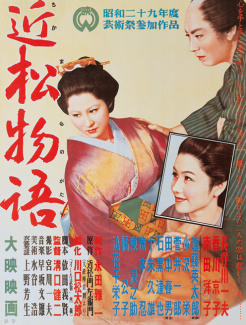 |
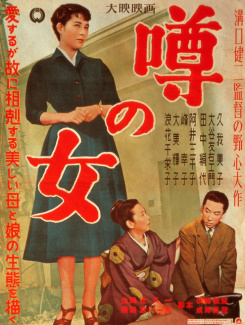 |
|
|
|
Masters of Cinema - Spine #58 +59 Region 'B' - Blu-ray |
| 1:41:49.686 + 1:23:36.219 |
|
Chikamatsu monogatari 1080P Dual-layered Blu-rayDisc Size: 47,361,410,384 bytes Feature: 25,021,523,520 bytes Video Bitrate: 28.94 MbpsCodec: MPEG-4 AVC Video |
|
Uwasa No Onna 1080P Dual-layered Blu-rayDisc Size: 47,361,410,384 bytes Feature: 20,583,091,776 bytes Video Bitrate: 28.99 MbpsCodec: MPEG-4 AVC Video |
| LPCM Audio Japanese 1152 kbps 1.0 / 48 kHz / 1152 kbps / 24-bit |
| English, None |
|
Release Information: Studio: Eureka - Masters of Cinema Aspect Ratio: Original Aspect Ratio 1.33:1 Edition Details: • Video
discussions on both films by Tony Rayns (13:17, 12:40) |
Uwasa no Onna
Subtitle Sample
|
1) Eureka (Masters of Cinema) - Region 2 - NTSC TOP 2) Masters of Cinema - Region 'B' - Blu-ray - BOTTOM
|
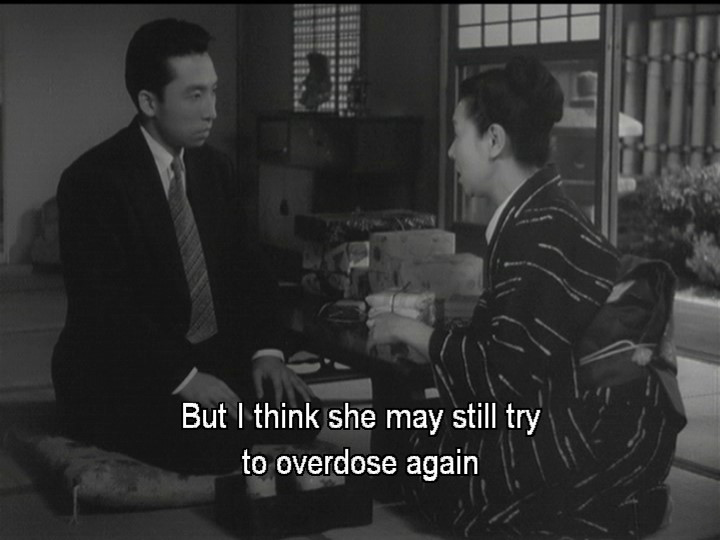 |
Screen Captures
|
1) Eureka (Masters of Cinema) - Region 2 - NTSC TOP 2) Masters of Cinema - Region 'B' - Blu-ray - BOTTOM
|
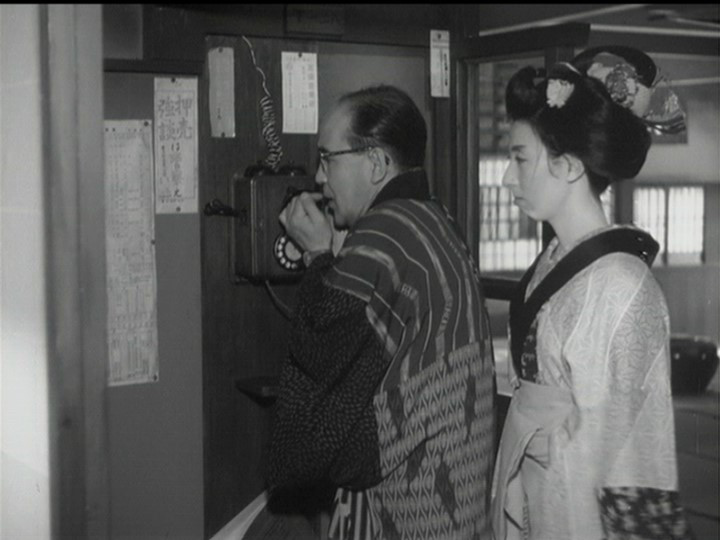 |
Chikamatsu Monogatari
|
1) Eureka (Masters of Cinema) - Region 2 - NTSC TOP 2) Masters of Cinema - Region 'B' - Blu-ray - BOTTOM
|
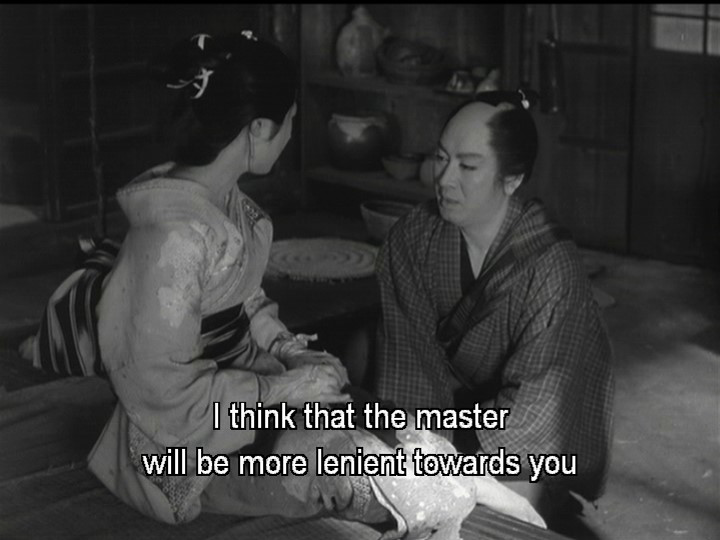 |
|
1) Eureka (Masters of Cinema) - Region 2 - NTSC TOP 2) Masters of Cinema - Region 'B' - Blu-ray - BOTTOM
|
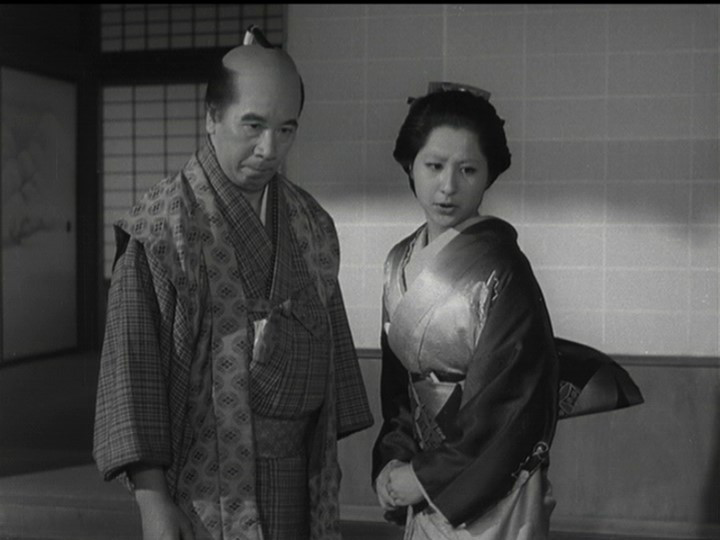 |
(aka 'Akasen Chitai' or 'Street of Shame' / 'Yōkihi' or 'Empress Yang Kwei Fei')
Directed by
Kenji Mizoguchi
Japan 195
|
Mizoguchi's final film is a grim but profoundly moving study of a group of prostitutes in Tokyo's red light district. While they go about their daily business, there are constant references to the anti-prostitution legislation which Parliament is debating. As is made clear, merely passing a law won't save the women. For whatever reasons they became prostitutes (money-related in every case), they can never escape the judgment passed on them by the repressive, patriarchal society which shunned them in the first place. The settings are a far removed from the medieval landscapes of Ugetsu or The Life of Oharu, but Mizoguchi's focus on the plight of his women characters is as intent and heart-rending as ever. Excerpt from TimeOut Film Guide located HERE
In AKASEN CHITAI, director Kenji Mizoguchi once again explores the lives of the courtesans of Tokyo's Yoshiwara pleasure district but forgoes his customary lyricism, taking a more harshly realistic view than in earlier films as SISTERS OF THE GION. Set in a brothel ironically dubbed Dreamland, the film allows five of its occupants to unfold their lives. Yumeko (Aiko Mimasu), a middle-aged widow supporting a son, remembers an era when the profession of courtesan was esteemed, requiring skills in music and flower arrangement. The cynical Mickey (Machiko Kyo) has entered the life as a form of rebellion against a wealthy businessman father whose philandering scarred her mother. Yorie (Hiroki Machida) is a simple country girl, working to support aged parents while dreaming of marriage. Yasumi (Ayako Wakao), a victim of her father's embezzlement, moonlights as a moneylender, to achieve respectability with a small business. Hanae (Michiko Kogure), with a baby and an unemployed husband, simply hopes for survival. Against an audio backdrop of news reports of the Diet of Japan voting to outlaw prostitution, the women struggle for a scrap of dignity amid the bleakness of their lives. A veritable dream team of Japanese actresses gives an ensemble performance of memorable virtuosity in the director's last and most lacerating excoriation of his nation's unforgivable treatment of its women.
***
Set many centuries ago, Yokihi
[Imperial Concubine Yang, aka _Yang Kwei Fei] recounts the Chinese legend
referred to in its title. |
Posters
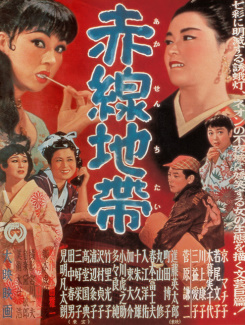 |
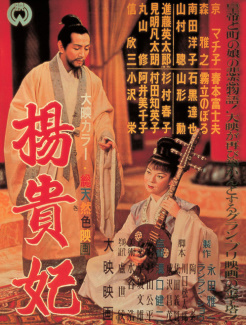 |
Theatrical Release: March 18th, 1956 + May 3rd, 1955
|
|
|
Masters of Cinema - Spine #58 +59 Region 'B' - Blu-ray |
| 1:25:33.169 + 1:31:11.132 |
|
Akasen Chitai 1080P Dual-layered Blu-rayDisc Size: 49,735,131,473 bytesFeature: 21,889,115,712 bytes Video Bitrate: 29.99 MbpsCodec: MPEG-4 AVC Video |
|
Yōkihi 1080P Dual-layered Blu-rayDisc Size: 49,735,131,473 bytes Feature: 26,720,493,120 bytes Video Bitrate: 34.99 MbpsCodec: MPEG-4 AVC Video |
|
LPCM Audio Japanese 1152 kbps 1.0 / 48 kHz / 1152 kbps / 24-bit Commentary: Dolby Digital Audio English 192 kbps 2.0 / 48 kHz / 192 kbps LPCM Audio Japanese 1152 kbps 1.0 / 48 kHz / 1152 kbps / 24-bit |
| English, None |
|
Release Information: Studio: Eureka - Masters of Cinema Aspect Ratio: Original Aspect Ratio 1.33:1 Edition Details: • Video
discussions on both films by Tony Rayns (11:15, 9:03) |
Yōkihi
Subtitle Sample
|
1) Eureka (Masters of Cinema) - Region 2 - NTSC TOP 2) Masters of Cinema - Region 'B' - Blu-ray - BOTTOM
|
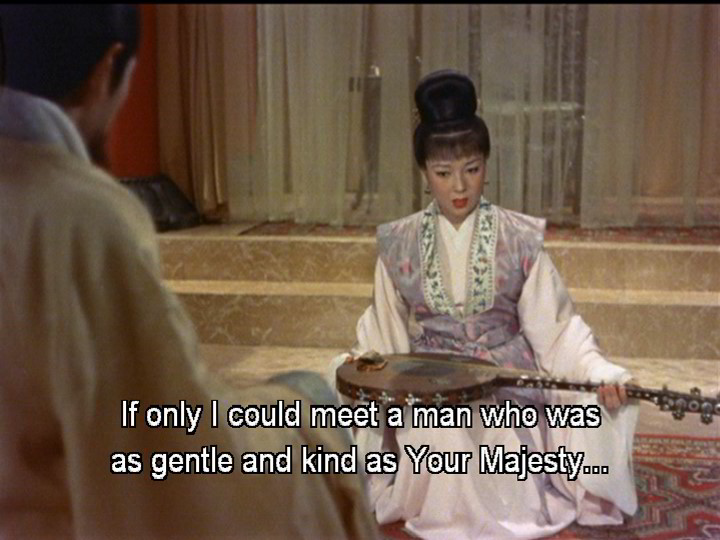 |
More Blu-ray Captures
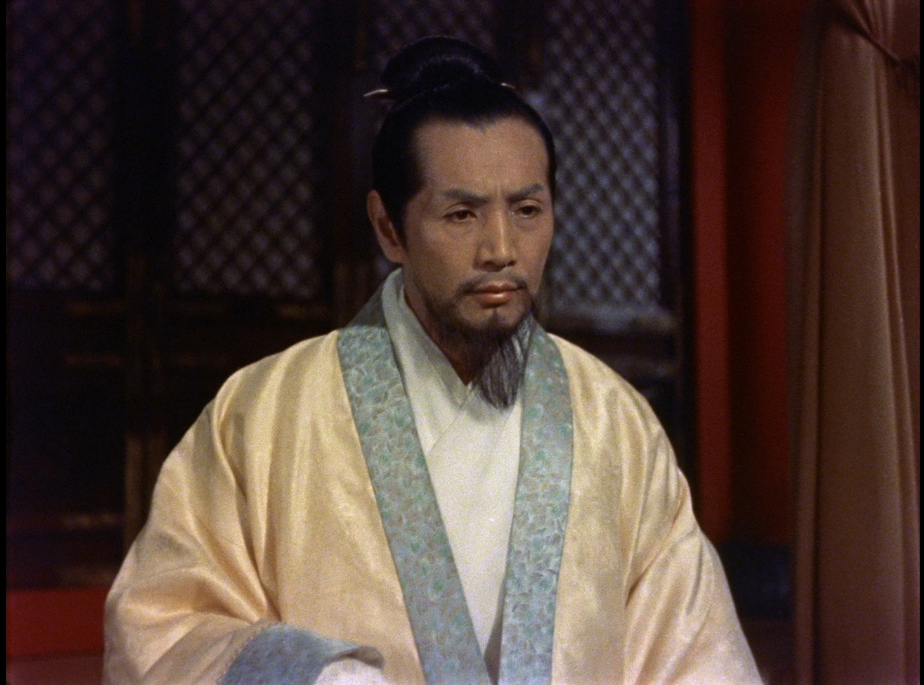 |
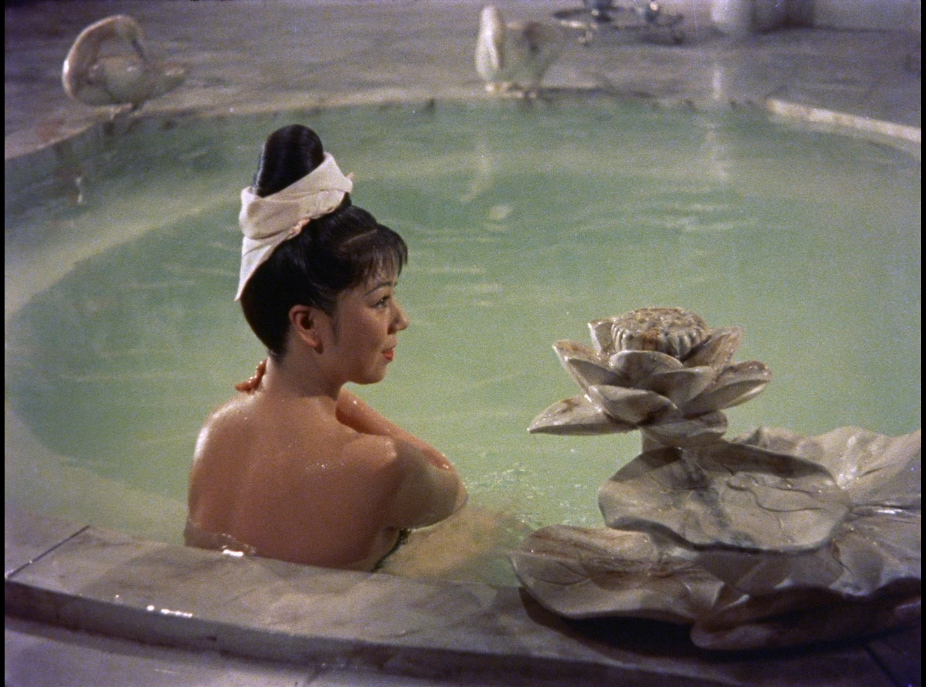 |
Akasen Chitai
Subtitle Sample
|
1) Eureka (Masters of Cinema) - Region 2 - NTSC TOP 2) Masters of Cinema - Region 'B' - Blu-ray - BOTTOM
|
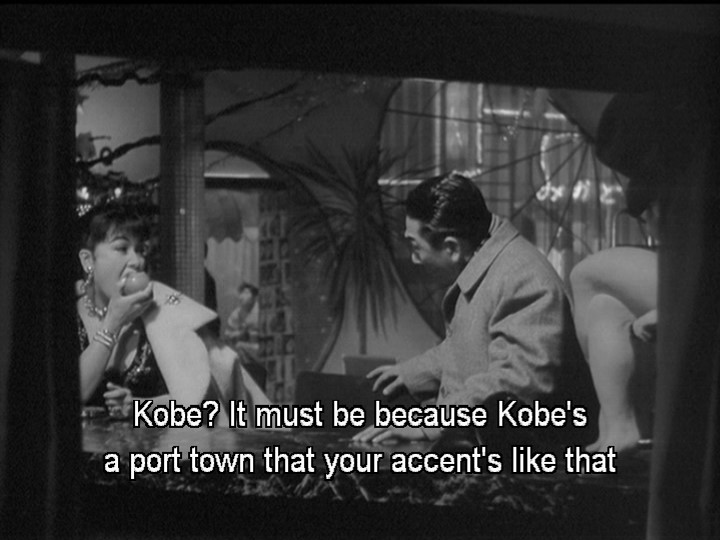 |
Screen Captures
|
1) Eureka (Masters of Cinema) - Region 2 - NTSC TOP 2) Masters of Cinema - Region 'B' - Blu-ray - BOTTOM
|
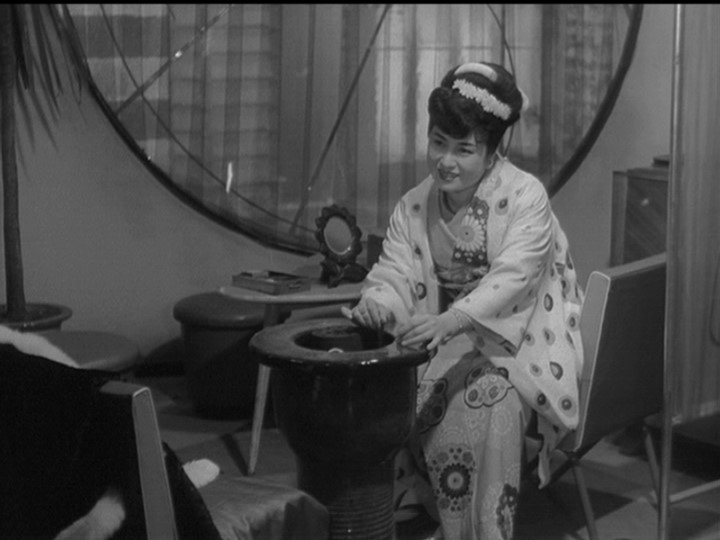 |
More
Blu-ray Captures
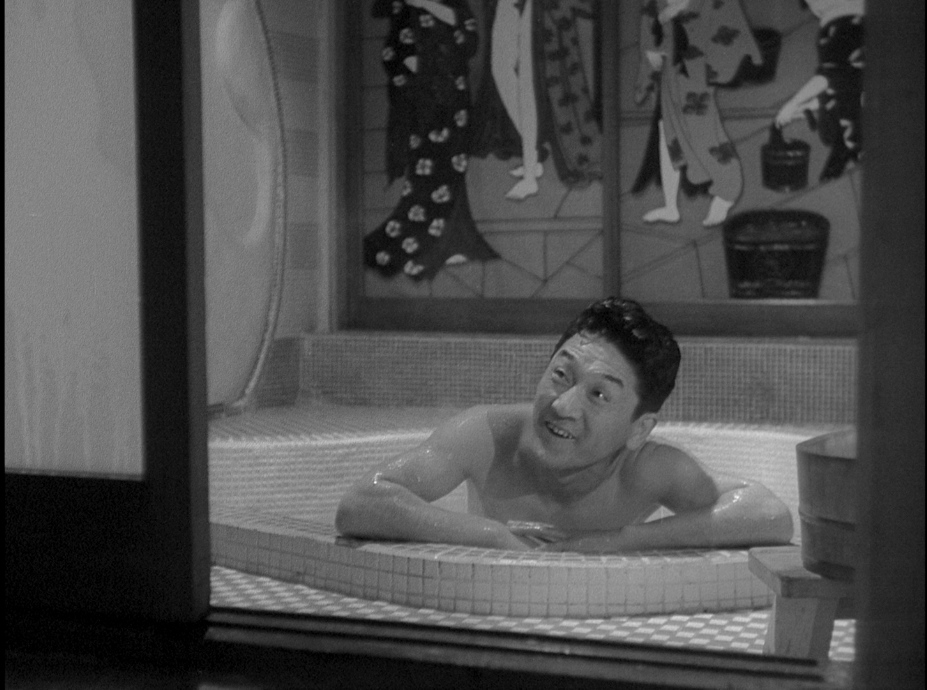 |
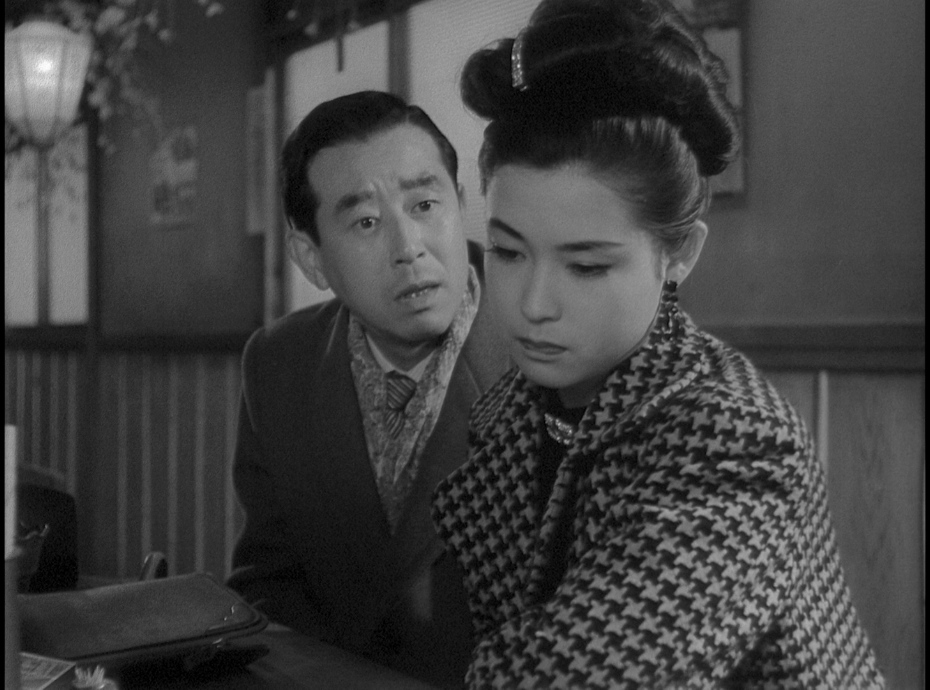 |
|
Box Cover |
|
CLICK to order from:
|
|
Distribution |
Masters of Cinema - Region 'B' - Blu-ray |
|
![]()
![]()
![]()
![]()

Search DVDBeaver |
S E A R C H D V D B e a v e r |

